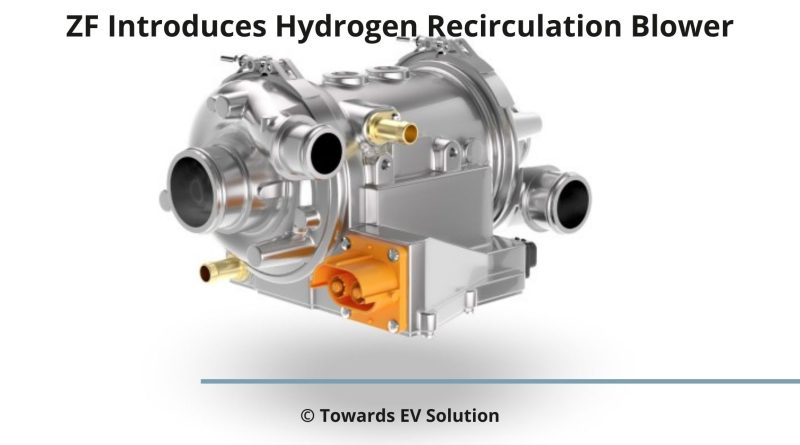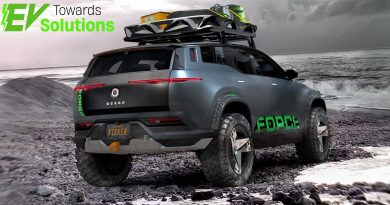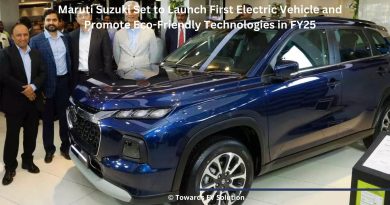ZF Introduces Hydrogen Recirculation Blower Improving the Fuel Cell Energy Efficiency
The ZF Commercial Vehicle Solutions announced the launch of its latest innovation of hydrogen recirculation blower to optimize the hydrogen levels in fuel cell-based electric vehicles. This new product works in association with ZF’s Fuel Cell Air Compressor to improve energy and longevity by recirculating unused hydrogen to optimize hydrogen consumption and performance. This system is durable just like the fuel cell air compressor and utilizes turbo technologies that result in the reduction of hydrogen usage in commercial electric vehicles.
Fuel Cell Electric Vehicle Market Size
“According to Precedence Research’s Report on “Fuel Cell Electric Vehicle Market”, The global fuel cell electric vehicle market size was valued at USD 6 billion in 2022 and is expected to hit around USD 428.70 billion by 2032 with a registered CAGR of 53.30% from 2023 to 2032.”
By 2023, sales of FCEVs reached 25,000 units globally, a 20% increase from the previous year. The projected sales for 2024 are expected to rise significantly, potentially reaching 35,000 units as more manufacturers enter the market and consumer awareness continues to grow. Additionally, the expansion of FCEVs into public transportation systems is gaining traction, with cities worldwide investing in hydrogen-powered buses and trucks.
The Asia Pacific is expected to be the most opportunistic region for fuel-cell electric vehicles through the rising adoption due to stringent government policies. The region makes efforts on air pollution control by bringing a ban on diesel engines. There is an expected construction of around 1000 refueling stations by 2032 to fulfill the industrial demands across the countries. Hyundai Motor Company and Toyota Motor Company are some of the leading players to offer cars, buses, and logistic vehicles across the region.
Commercial electric vehicles used for transport, logistics, or traveling intended for short-distance coverage are in greater demand than long-distance-covering vehicles. So, the expected growth rate of the short-distance segment is 45% from 2023-2032. France aims to enhance up to 5000 fuel-cell passenger cars which include light-duty vehicles, 200 buses, and trucks by the year 2023. France also aims to bring 20 to 50,000 passenger cars by the year 2028. Germany is the first country in the world to deploy a passenger train and the train will be introduced by the year 2023.
The United States President signed a bill in December 2021 with investments in the hydrogen industries to reduce harmful emissions. Canada stated that it aims to operate more than 5,000,000 fuel cell electric vehicles as a part of its hydrogen strategy by the year 2050. According to the 2040 development plan of South Korea, 2.9 million passenger cars will run 80,000 taxis, 40,000 buses, and 30,000 trucks respectively. Audi AG, Volvo Group, BMW Group, Toshiba, etc. are some of the major industrial players in the fuel cell electric vehicle market.
Japan Fuel Cell Electric Vehicle Market Size
“A recent report from Precedence Research Reveals that in Japan, the fuel cell electric vehicle market size is calculated at USD 1.50 billion in 2022 and is expected to hit around USD 9.57 billion by 2032 with a registered CAGR of 52.80% from 2023 to 2032.”
Upcoming Hydrogen Cars in India under the Unique Pilot Project of the Union Roads and Highways Authority
| Sr. No. | Name of the Hydrogen Car |
| 1 | BMW ix5 with 125 kW electrical output |
| 2 | Ineos Grenadier hydrogen Fuel Cell Electric Vehicle |
| 3 | 2023 Hyundai Nexo |
| 4 | Hyundai Staria Fuel Cell |
| 5 | Kia FK/Hyundai FK |
| 6 | Land Rover Defender Fuel Cell Vehicle |
Investment in infrastructure is not limited to refueling stations. Research conducted by the International Energy Agency (IEA) in 2022 indicates that governments and private entities are also investing in hydrogen production facilities, which are vital for ensuring a stable supply of renewable hydrogen. In 2023, the number of operational hydrogen production plants globally increased by 30%, with a projected increase of another 40% by the end of 2024.
Meet Mahima, a voice you’ll want to follow in the electric vehicle (EV) industry. With a rich background in journalism and mass media, Mahima doesn’t just report the facts; she tells the story behind the revolution. Her expertise of over four years in writing positions her uniquely as someone who knows how to engage, inform, and inspire her audience. Whether she’s diving into the latest EV technologies or exploring the future of sustainable mobility, Mahima delivers insights that go beyond the surface, making her work a must-read for enthusiasts, professionals, and curious readers alike.
In every article, blog, or feature, she brings a human touch to the world of electric vehicles. She weaves narratives that highlight how the shift toward electrification is transforming economies, reshaping consumer preferences, and pushing the boundaries of innovation. Her sharp analytical skills allow her to see connections others might miss, offering fresh perspectives on trends that are shaping the automotive landscape.





